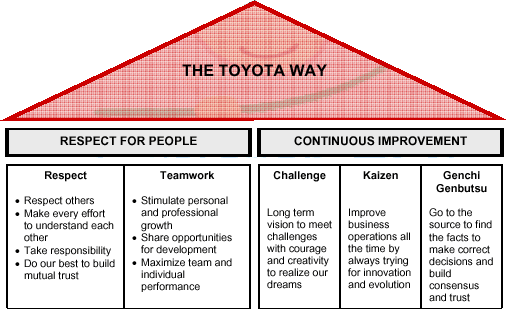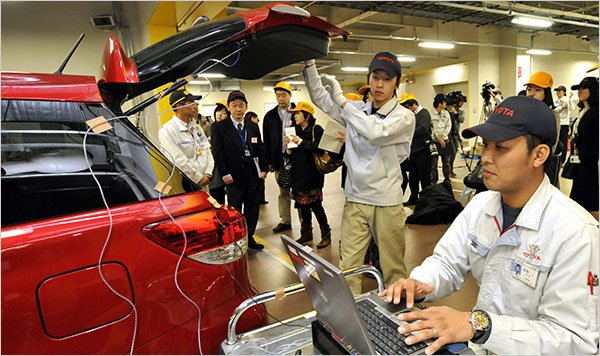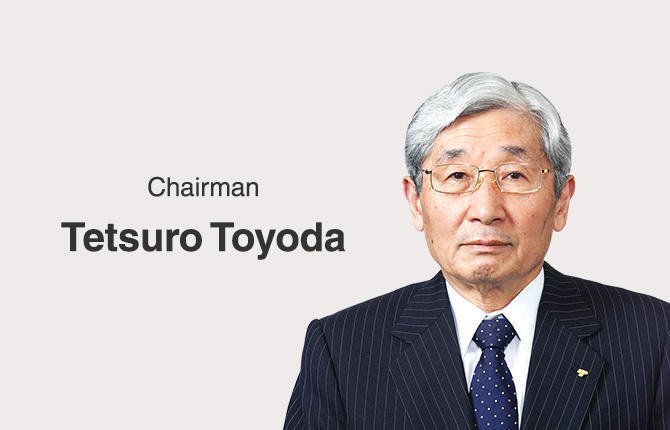By Robyn of Eggs

Professor Kay
Management 101
Abstract:
This paper defines short and long term goals for maximizing Toyota’s Quality Control Department. It offers suggestions for training both departmentally and company-wide, including cross-training. Using the P3+E approach, training will ensure communication, commitment, and confidence (Conlow, 2001, p. 37). Though there are training challenges to face due to lack of resources, there is much in-house training that can be conducted. With company-wide support and involvement, Toyota will hold onto many loyal employees in the future.

Introduction:
The book "Excellence in Supervision" states
that the key to performance management lies in:
- Setting clear expectations and goals
- Giving positive feedback
- Using awards and recognition effectively, and
- Being open to receiving constructive criticism (Conlow, 2001, p. 19).
So being, my short and long term goals for Toyota’s Quality Control Department are listed below:
The short term goals
are intended to boost both morale and performance, some of which go into effect immediately upon approval. The long term goals involve On-the-Job Training (OJT) (Conlow, 2001, p. 37). They also involve direct input from employees on strategic planning and in creating their own peer reviews.
Quality Control Department (1 Year) Goals
- Create quarterly employee review forms [end of first quarter] based on standardized questions which the directors have had direct input in selecting. Use the (B)elow, (M)eets, and (E)xceeds expectations model (Conlow, 2001, p. 38). Test on directors [second quarter]. Then, after kinks are worked out [third quarter], disseminate to all employees.
- Institute a recognition program, to come into effect after one year, which offers awards every quarter, for every department, based on these employee reviews. Gifts could include $500 cash, $100 gift cards, and assorted gift packages. Draw straws to randomize who will evaluate who out of the seven, evaluate the oddball [second quarter]. Otherwise, have peers conduct evaluations on each other by random partnering [begin at third quarter].
- Hold weekly, thirty to sixty minute (p. 52) meetings, one-on-one, with each director, in order to maintain communications, more if requested or necessary (Conlow, 2001).
- Hold daily morning meetings, to divulge and receive information, delegate tasks, and draw the daily number for department or company-wide bingo [as approved].
- Hold monthly, thirty to sixty minute (p. 52), department-wide meetings to create cohesion, share information and give positive feedback (Conlow, 2001). Ask for three things going well, and three things going not so well. Discuss and take notes. Begin planning of long term strategy and ask for input.
- Establish a department or company-wide bingo game to boost morale. Bingo winners receive a $50 gift card, and bragging rights, or even a coveted parking spot until the next winner is announced.
- Foster interdependent relationships (p. 45) with directors by establishing a departmental mission statement, objectives, and subsequent goals cooperatively [by end of year] (Conlow, 2001).
Quality Control Department (2-10 Year) Goals
- Have directors swap managing departments for ten hours each quarter, rotating quarterly between departments, in order to create teamwork while learning new skills [begin second year, evaluate every year after].
- Have a long term strategic plan in place for the department [end of year two, evaluate each year after].
- Have all directors cross-trained with knowledge of each other’s departments by the five year mark.
- Award employees who have worked with the company for ten, fifteen, and twenty years plus. Have awards presented to all deserving parties by the five year mark.
- Employ ten people or more who have worked with the company for ten or more years, at the ten year mark, proving a boost in employee morale and cohesion, as well as employee loyalty.

Training by Department and Company-Wide
Using the P3+E approach,
OJT (p. 37) will be conducted by ‘presenting’ tools to boost morale and improve performance (p.19), ‘practicing’ evaluations and recognition, and ‘performing’ at the (E)xceeds expectations levels (p.38) in order to set the example for everyone else. This training should be ‘evaluated’ at the end of each year, at each level (Conlow, 2001).
Training will be conducted down to the lowest level,
with each employee receiving forty hours a year of OJT. Whether it is skills training, management training, or certifications, continual improvement will be implemented into the department. Part of continual growth is continual learning. Therefore, in order for the company to grow, employees must grow by learning.
Cross training is important for management
across the board, as it encourages cohesion, and provides opportunities to work as a team and build respect for each other. It will only strengthen the department to conduct ongoing training.

Challenge Analysis
Toyota has faced many challenges in the past.
“During the hard times, Toyota focused on consolidating its North American operations, shifting its resources, and closing under-performing operations” (Hoover’s, 2016). Having survived the recession, it is now changing its executive structure, at the very top, in Japan.
As Roberts states in his report, this change will
- Allow “faster decision-making and enhanced administration,
- Create “enhanced connections with Toyota Group Companies” and
- Provide “greater diversity among executives” (Roberts, 2015).
Still though, there are many challenges yet ahead.
The lack of in-house education curriculum requires outsourcing some of the training. Until this resource is obtained, it will remain a cost. The cost is worth the investment, however, as investing in employees is investing in the company.

Leadership traits
Good communicators who are committed and confident
make ideal leaders in this company. To ensure managers receive proper training to fit these criteria, weekly and monthly meetings have been set up. The purpose of the meetings is foster open communications. They will offer open forums for practicing and ensuring this. Commitment comes from involvement.
Directly involving the management team
and their subordinates in the strategic planning process, and on as many topics as available, will foster inclusiveness. Their direct involvement will lead to a sense of ownership and commitment, to the team and the company. Confidence will come from the continual education employees will receive each year.
Conclusion
Through ongoing training,
peer-to-peer evaluations, and employee cross-training and recognition, Toyota’s Quality Control Department will thrive. Employees will stay loyal when they are directly involved in shaping the future of their company. With guidance provided by leading by example, the bar will be set and continually beaten as employees challenge one another to be the best they can be.
With feedback from their peers,
and after being put in each other’s shoes, the merit of upper management will be tested and true, and ever empathetic towards each other in the future. The short and long term goals outlined above offer clear expectations and goals for the department. By giving positive feedback and using awards and recognition effectively (p. 19), performance and morale will be at an all-time high (Conlow, 2001).
References
Conlow, R. (2001). Excellence in supervision: Essential skills for the new supervisor. Menlo Park, CA: Crisp Publications. Retrieved from http://ezproxy.apus.edu/login?url=http://library.books24x7.com/toc.asp?bookid=2587
Roberts, G. (2015, Mar 06). JAPAN: Landmark Promotion for Toyota Europe Chief. Just - Auto Global News. Retrieved from http://search.proquest.com/docview/1660895868?accountid=8289
Hoover’s, Inc. (2016). Toyota Motor Corporation [Overview]. Retrieved from
http://cobrands.hoovers.com/company/TOYOTA_MOTOR_CORPORATION/crxxsi-1-1njhw5.html
*This block is the sole property of Robyn of Eggs. Exception - the photos in this block have been credited to their host. The writing in this block is not for reproduction or republication. Please re-steem and share with your friends and neighbors on social media. Copyright 2017.
Follow @robyneggs for more eggsciting posts!


